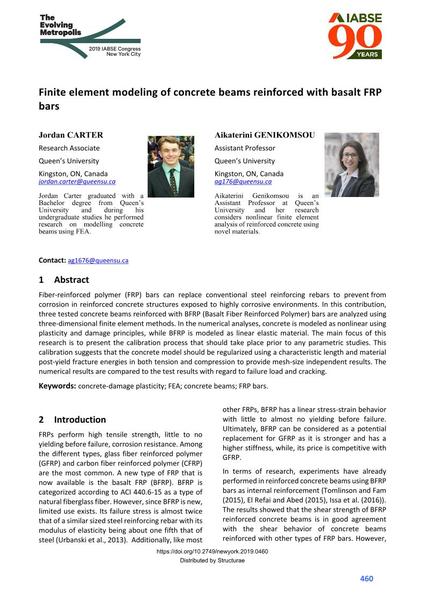Finite element modeling of concrete beams reinforced with basalt FRP bars

|
|
|||||||||||
Détails bibliographiques
| Auteur(s): |
Jordan Carter
(Queen’s University)
Aikaterini Genikomsou (Queen’s University) |
||||
|---|---|---|---|---|---|
| Médium: | papier de conférence | ||||
| Langue(s): | anglais | ||||
| Conférence: | IABSE Congress: The Evolving Metropolis, New York, NY, USA, 4-6 September 2019 | ||||
| Publié dans: | The Evolving Metropolis | ||||
|
|||||
| Page(s): | 460-466 | ||||
| Nombre total de pages (du PDF): | 7 | ||||
| DOI: | 10.2749/newyork.2019.0460 | ||||
| Abstrait: |
Fiber-reinforced polymer (FRP) bars can replace conventional steel reinforcing rebars to prevent from corrosion in reinforced concrete structures exposed to highly corrosive environments. In this contribution, three tested concrete beams reinforced with BFRP (Basalt Fiber Reinforced Polymer) bars are analyzed using three-dimensional finite element methods. In the numerical analyses, concrete is modeled as nonlinear using plasticity and damage principles, while BFRP is modeled as linear elastic material. The main focus of this research is to present the calibration process that should take place prior to any parametric studies. This calibration suggests that the concrete model should be regularized using a characteristic length and material post-yield fracture energies in both tension and compression to provide mesh-size independent results. The numerical results are compared to the test results with regard to failure load and cracking. |
||||
